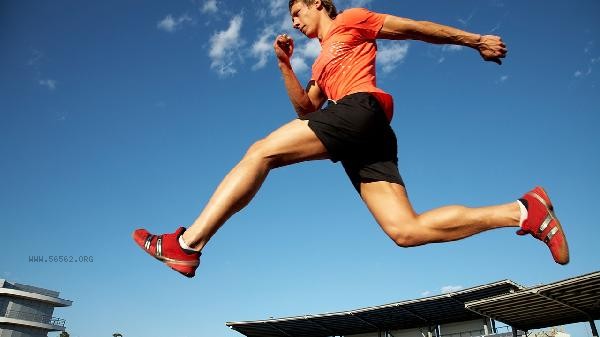The strain on the back of the thigh during running can be relieved through rest, ice compress, pressure bandaging, medication treatment, physical therapy, rehabilitation training, and other methods. Rear thigh strain is usually caused by excessive muscle stretching, insufficient warm-up, excessive exercise intensity, muscle fatigue, poor flexibility, and other reasons.

1. Rest and ice compress
During the acute phase, exercise should be stopped immediately to avoid further damage to muscle tissue. Wrap a towel in an ice pack and apply it to the affected area, 15-20 minutes each time, with 1-2 hour intervals between repetitions. Ice compress can effectively reduce local swelling and pain, and attention should be paid to avoiding skin frostbite.
2. Pressure bandaging
Using elastic bandages to apply moderate pressure bandaging to the injured area can help reduce internal bleeding and tissue fluid leakage. Pay attention to moderate elasticity when bandaging, so as not to affect blood circulation. During nighttime rest, the bandage can be removed to avoid discomfort caused by prolonged compression.
3. Medication therapy
When pain is significant, non steroidal anti-inflammatory drugs such as ibuprofen sustained-release capsules, diclofenac sodium sustained-release tablets, celecoxib capsules, etc. can be used according to medical advice. Muscle relaxants such as methylprednisolone hydrochloride tablets can also help alleviate muscle spasms. Flurbiprofen gel paste or diclofenac diethylamine emulsion can be selected as topical drug.

4. Physical therapy
After the acute phase, ultrasound therapy can be used to promote local blood circulation and accelerate tissue repair. Ultra short wave therapy can alleviate deep muscle inflammation, while infrared radiation helps relax muscles. Treatment should be carried out under the guidance of a professional physician, usually 10-15 times per course.
5. Rehabilitation Training
After pain relief, rehabilitation training should be gradually carried out. In the initial stage, gentle stretching exercises such as supine straight leg lifting can be done. Gradually increase resistance training in the later stage, such as prone leg bending, and use elastic bands to assist in training for better results. The training intensity should not cause significant pain and avoid secondary injuries.

During the recovery period of a thigh strain, it is important to maintain sufficient sleep, avoid vigorous exercise, and maintain the same posture for extended periods of time. Eating more fish, eggs, milk, and fresh fruits and vegetables rich in high-quality protein and vitamin C can help with muscle repair. After rehabilitation, you can gradually resume running training, pay attention to warm-up exercises, control exercise intensity, and use muscle patches for support and protection if necessary. If the symptoms persist or worsen, seek medical attention promptly to rule out serious injuries such as tendon rupture.






Comments (0)
Leave a Comment
No comments yet
Be the first to share your thoughts!